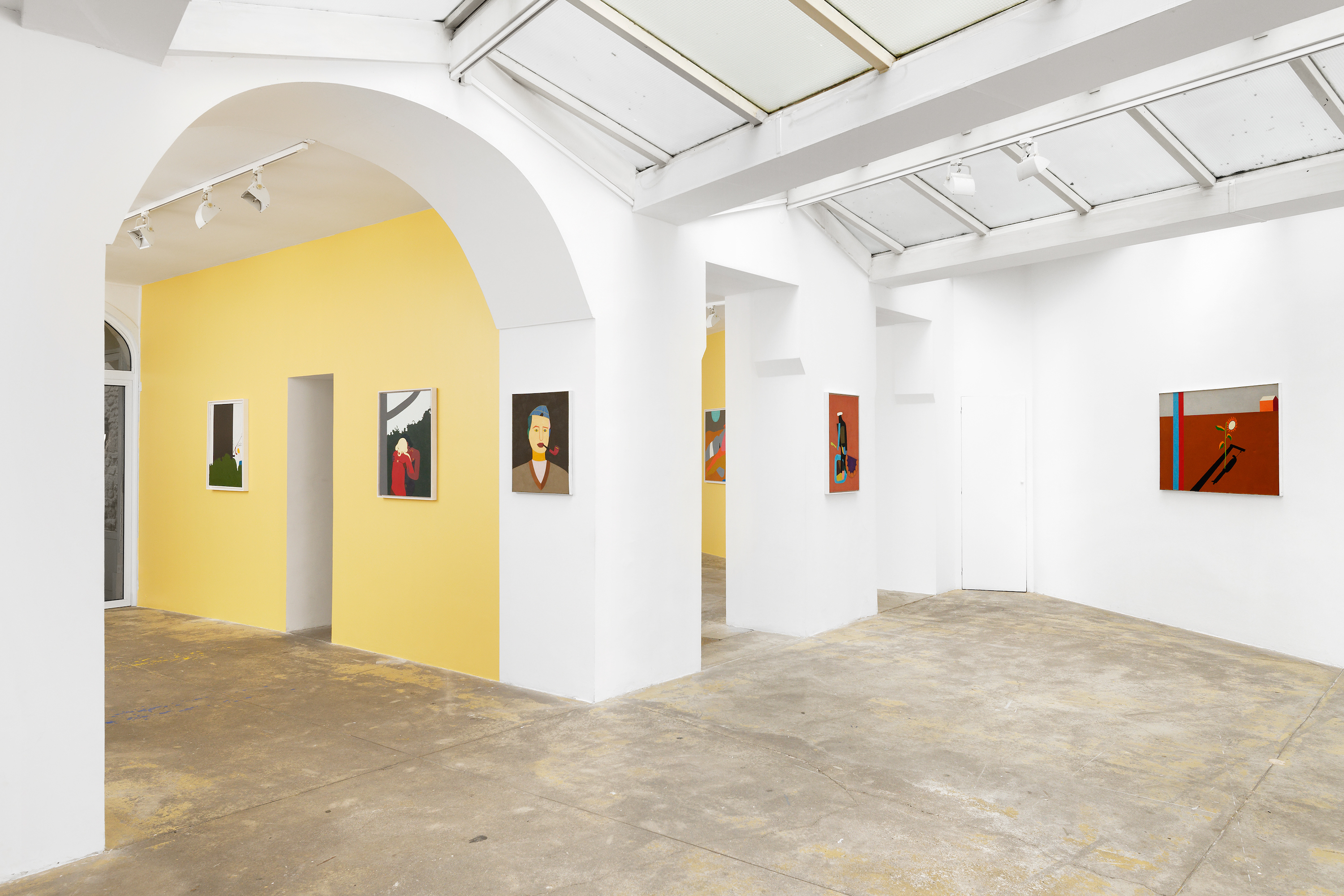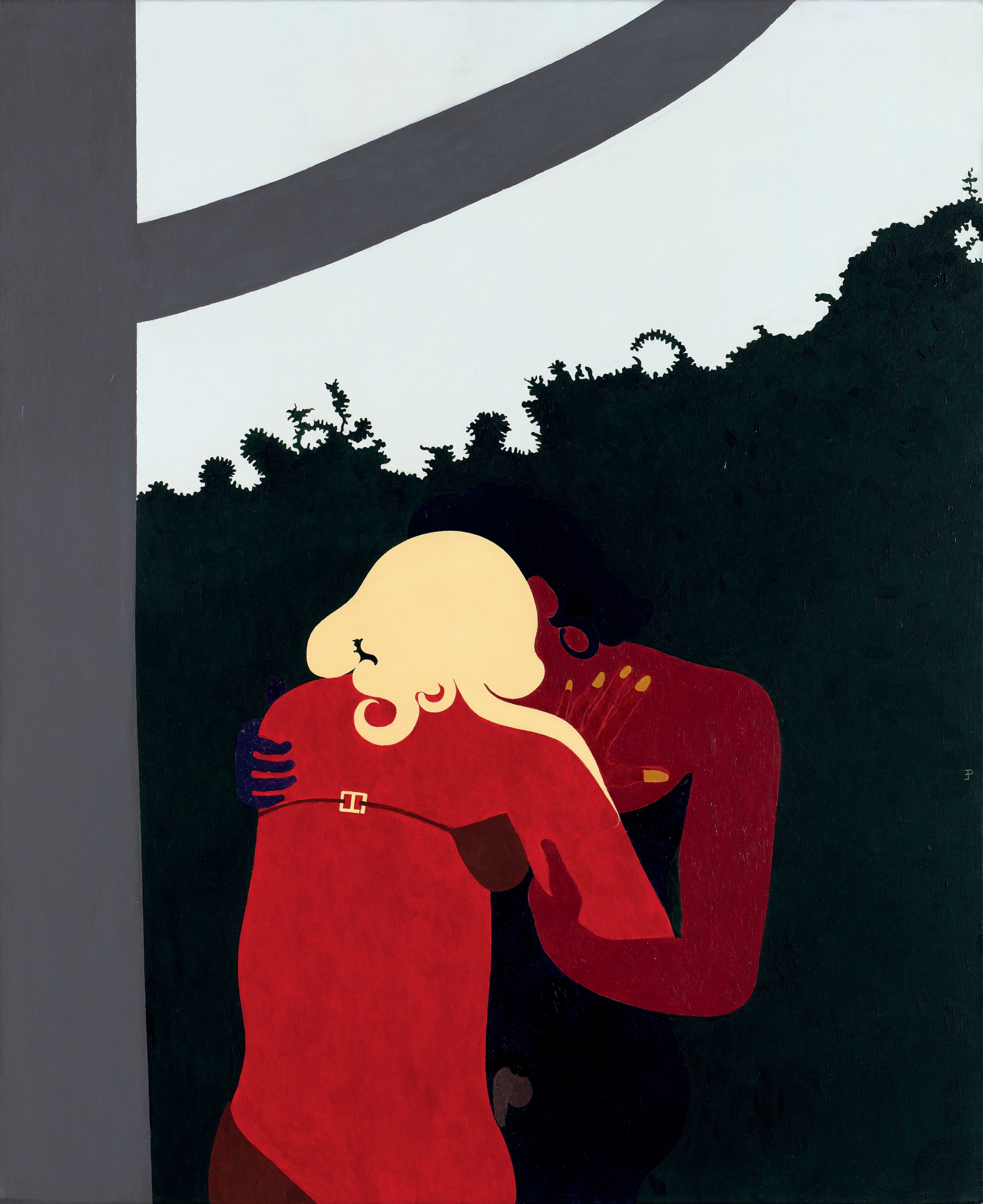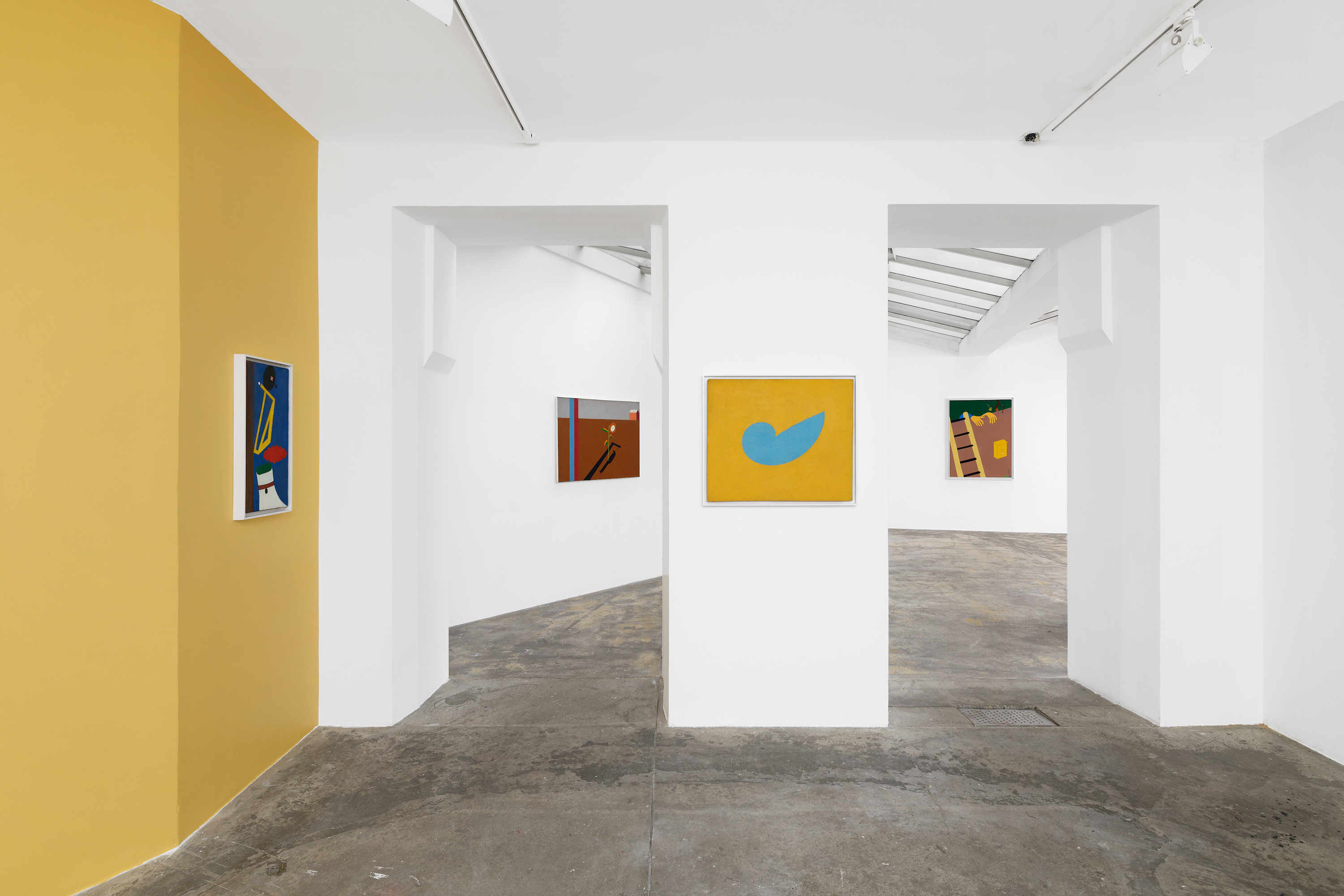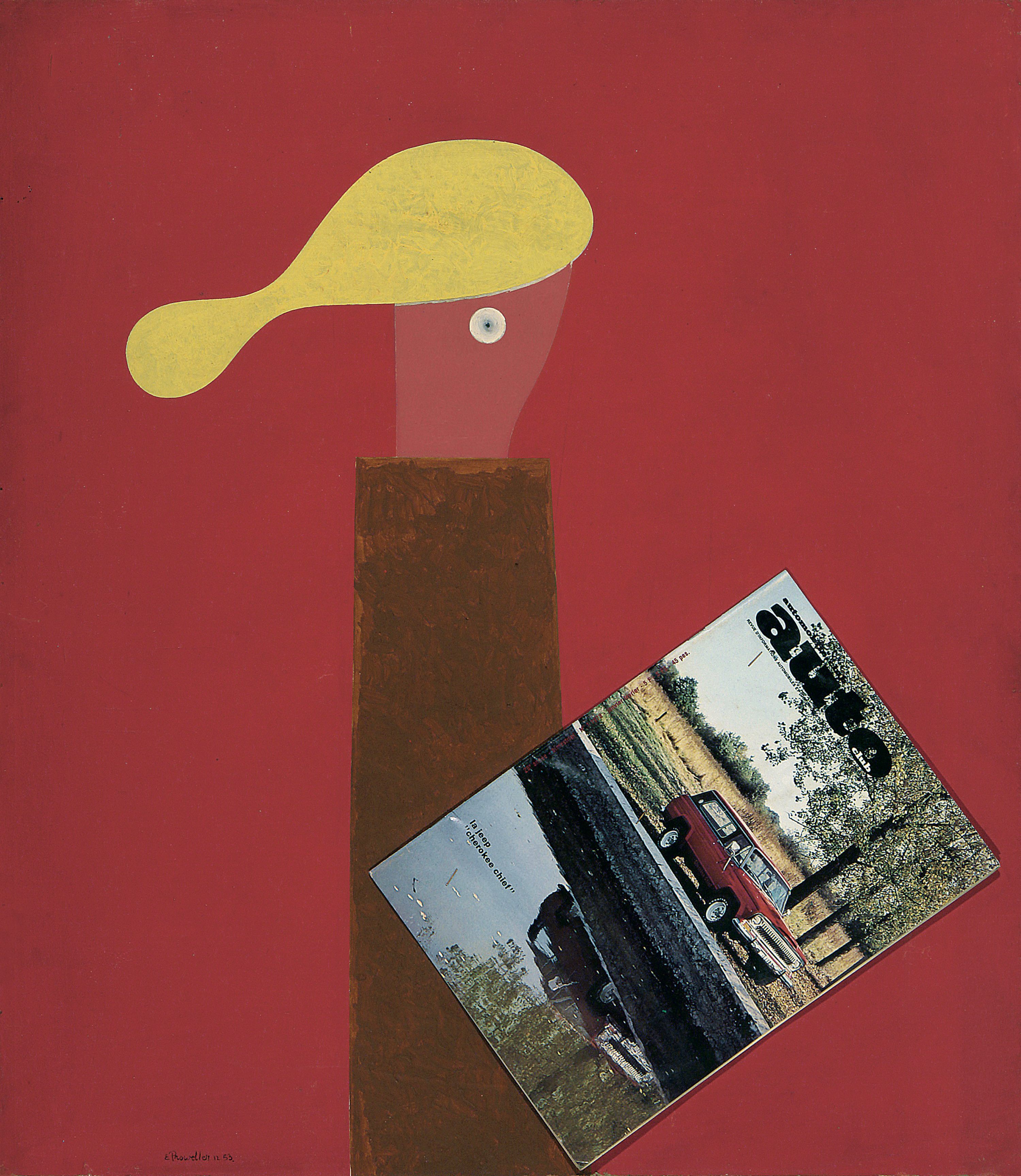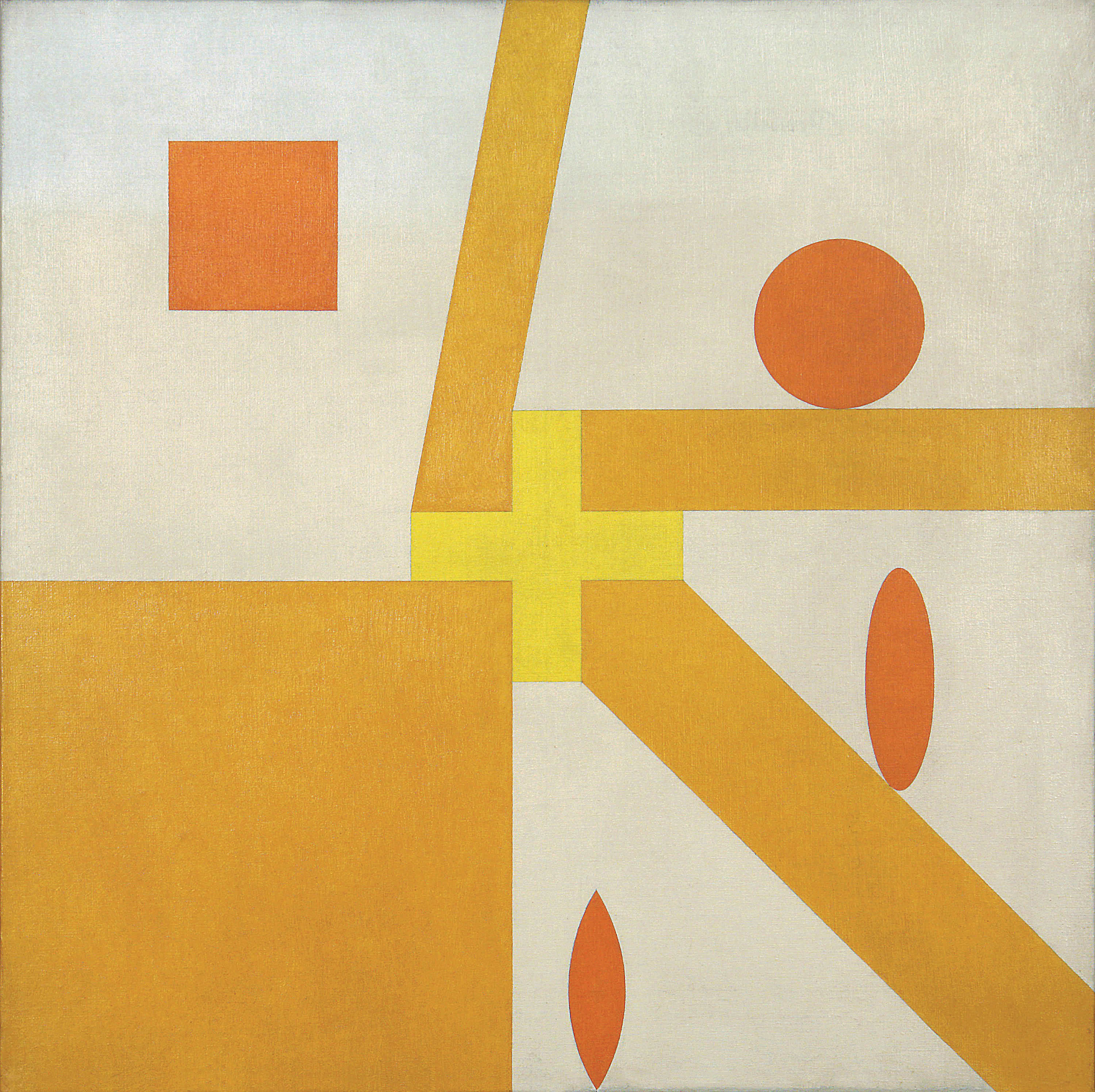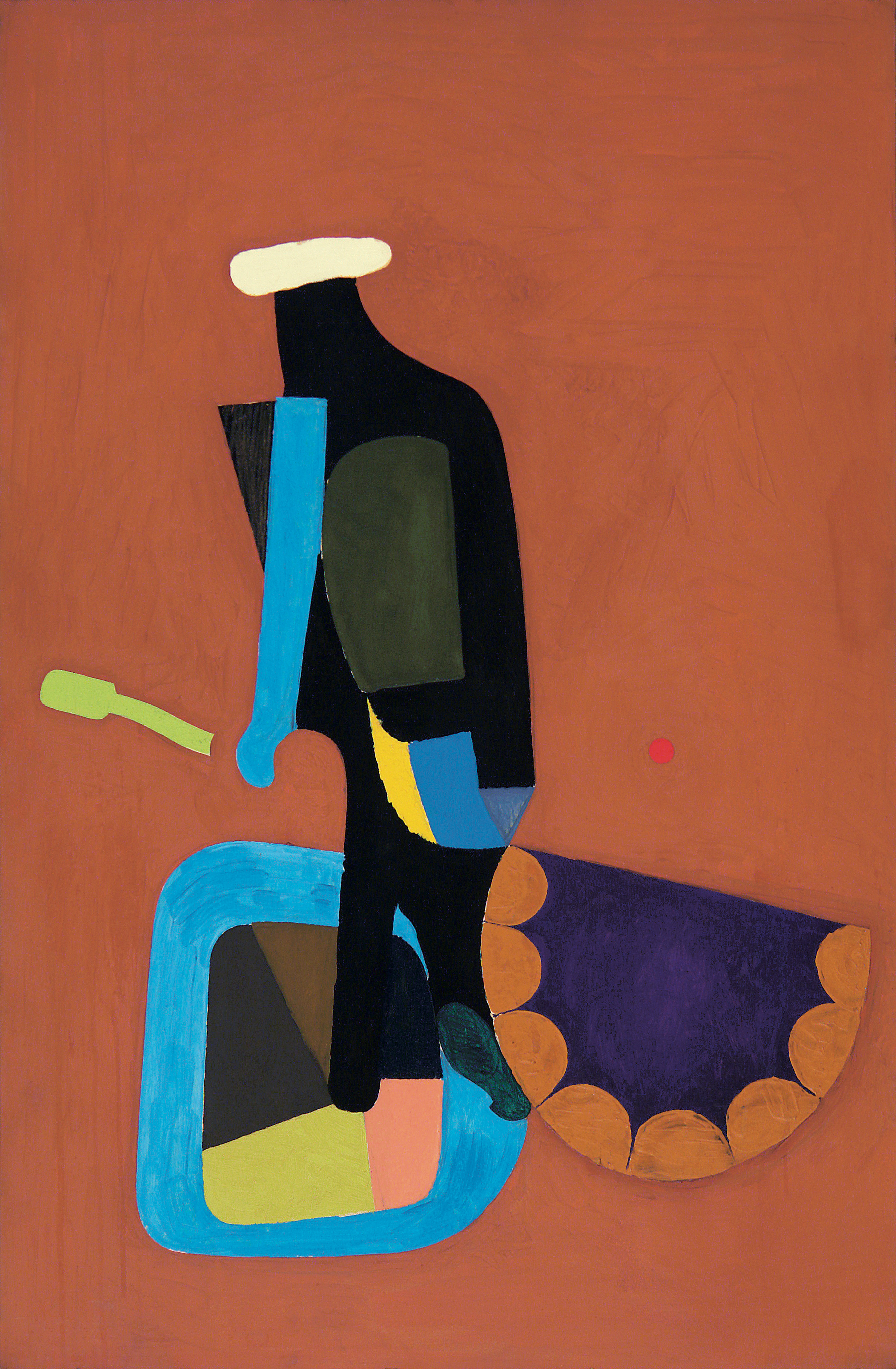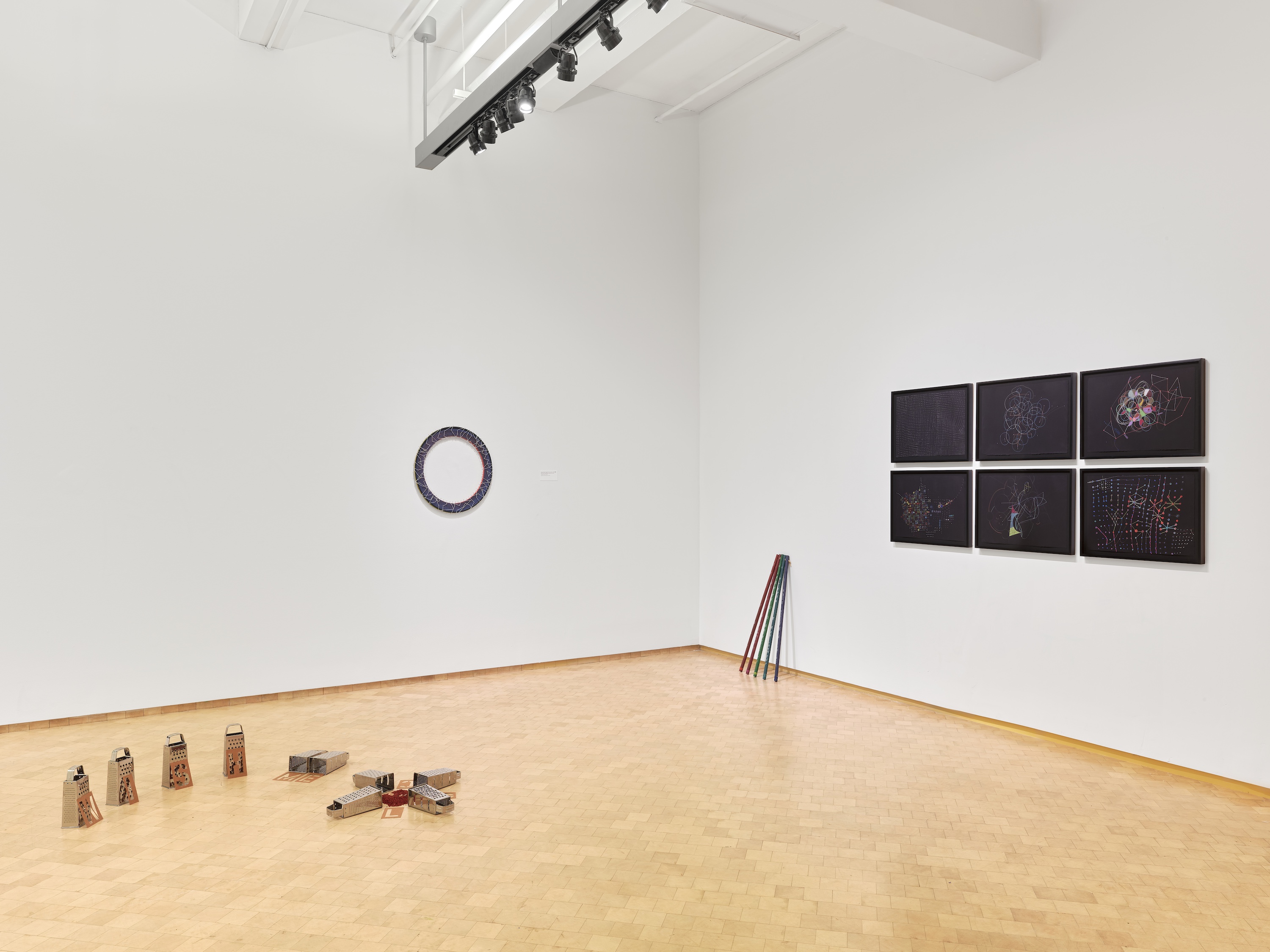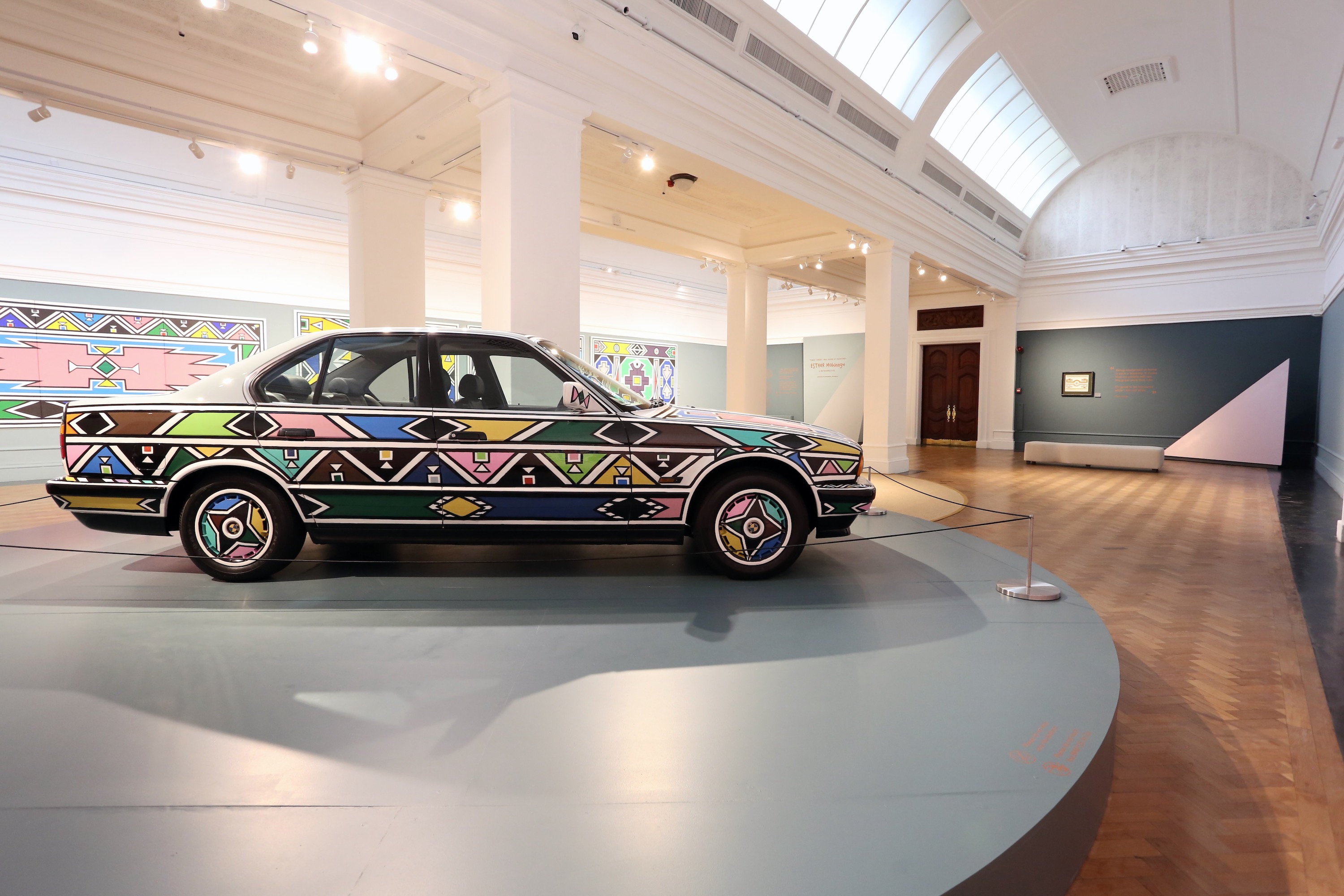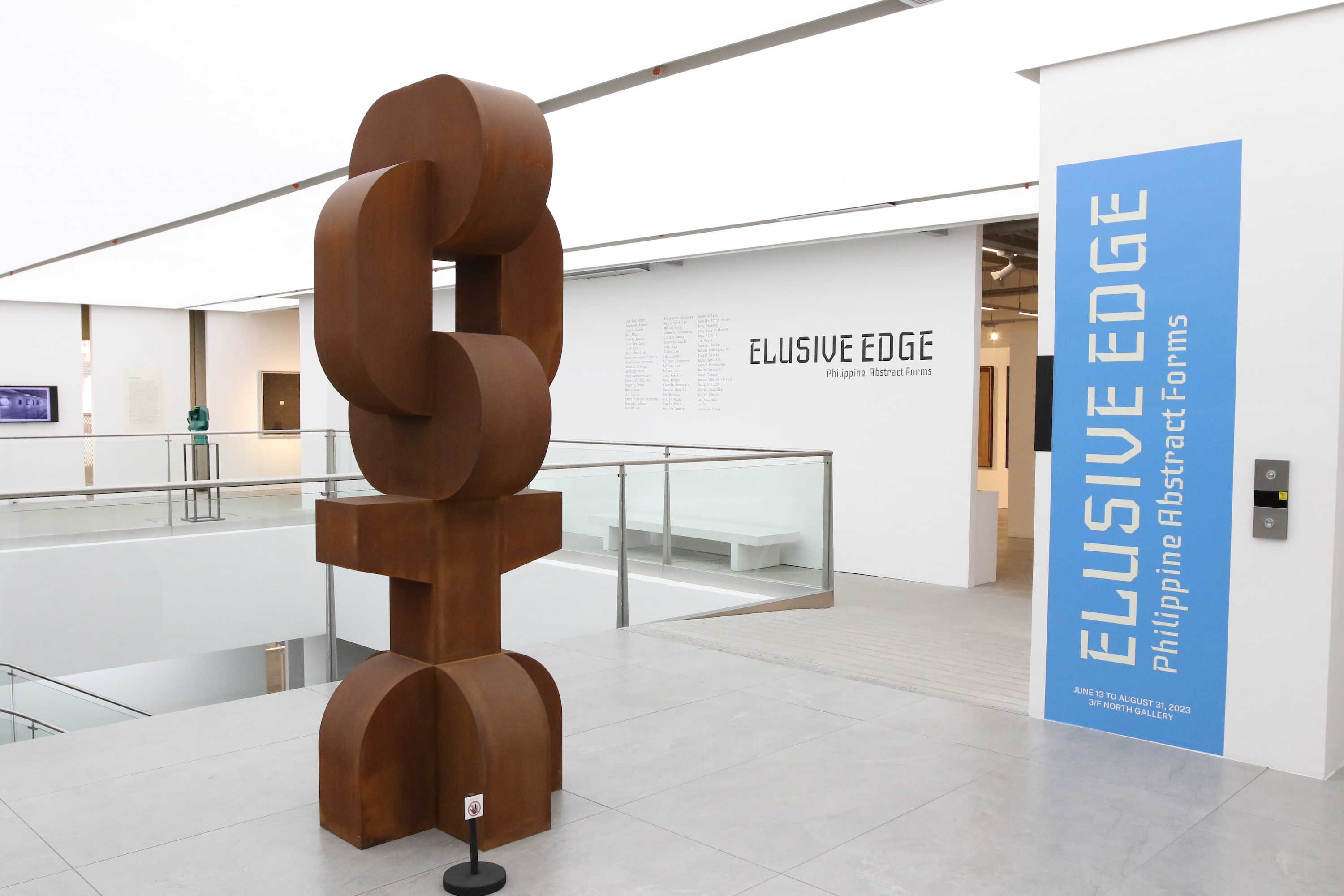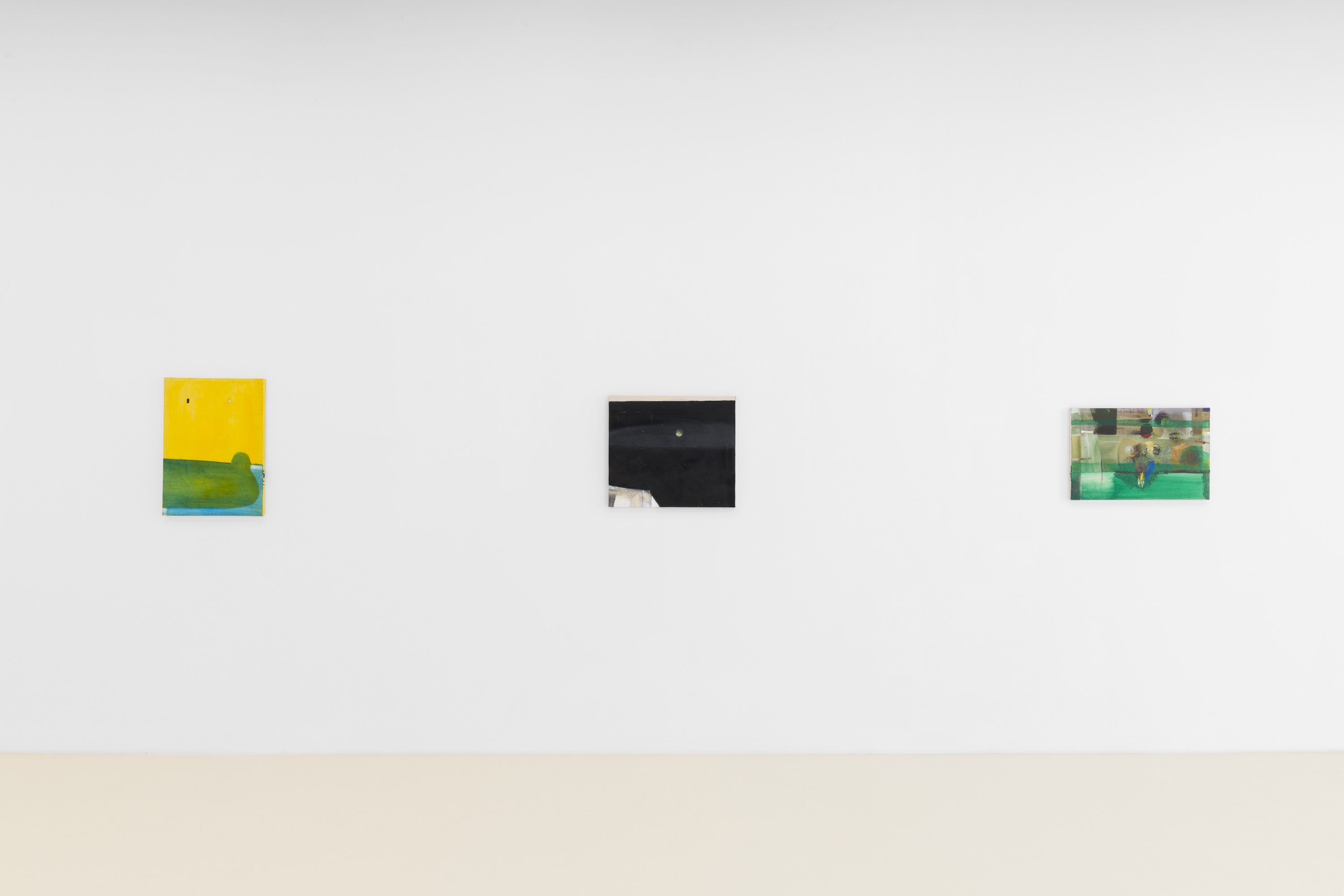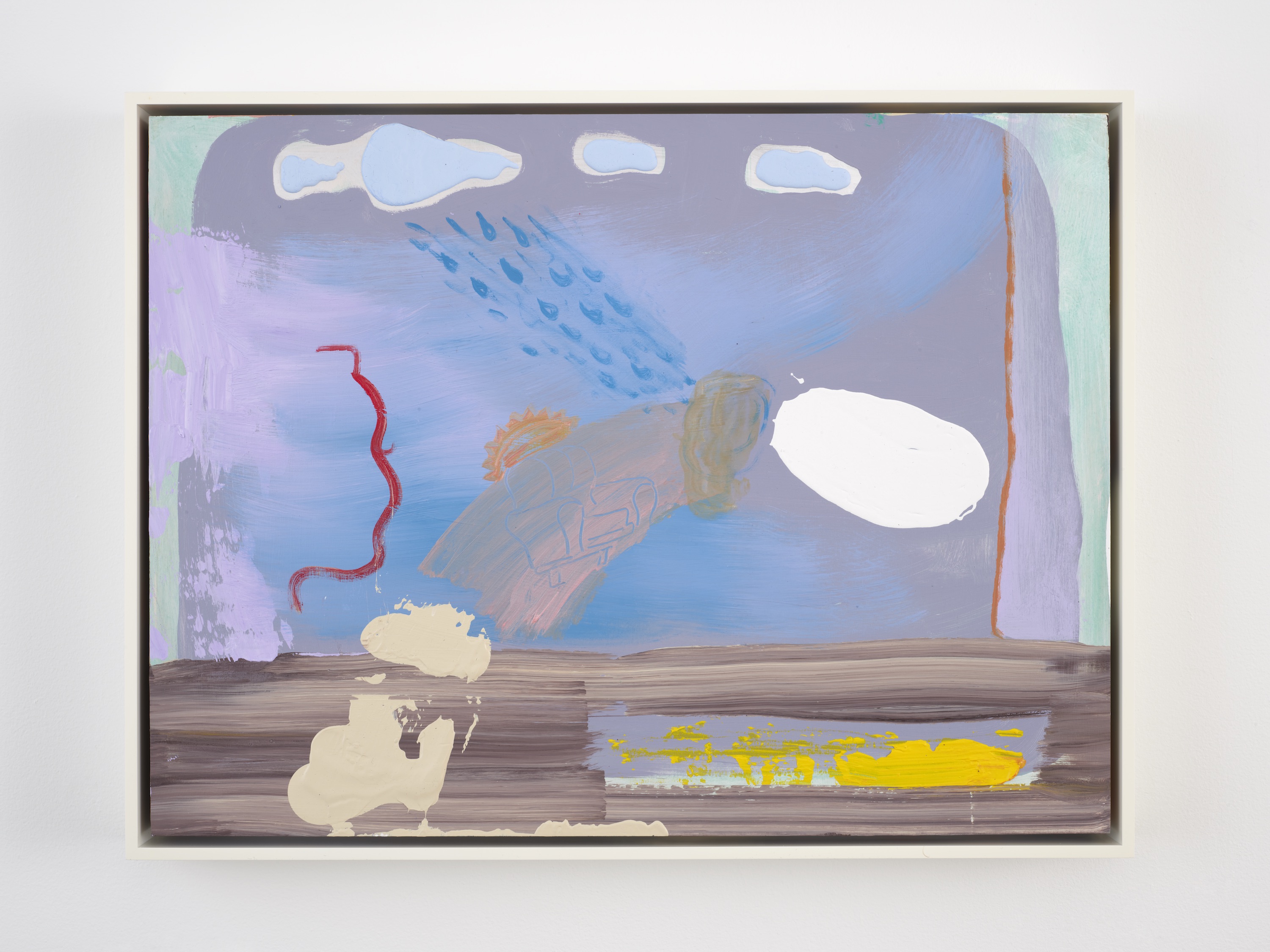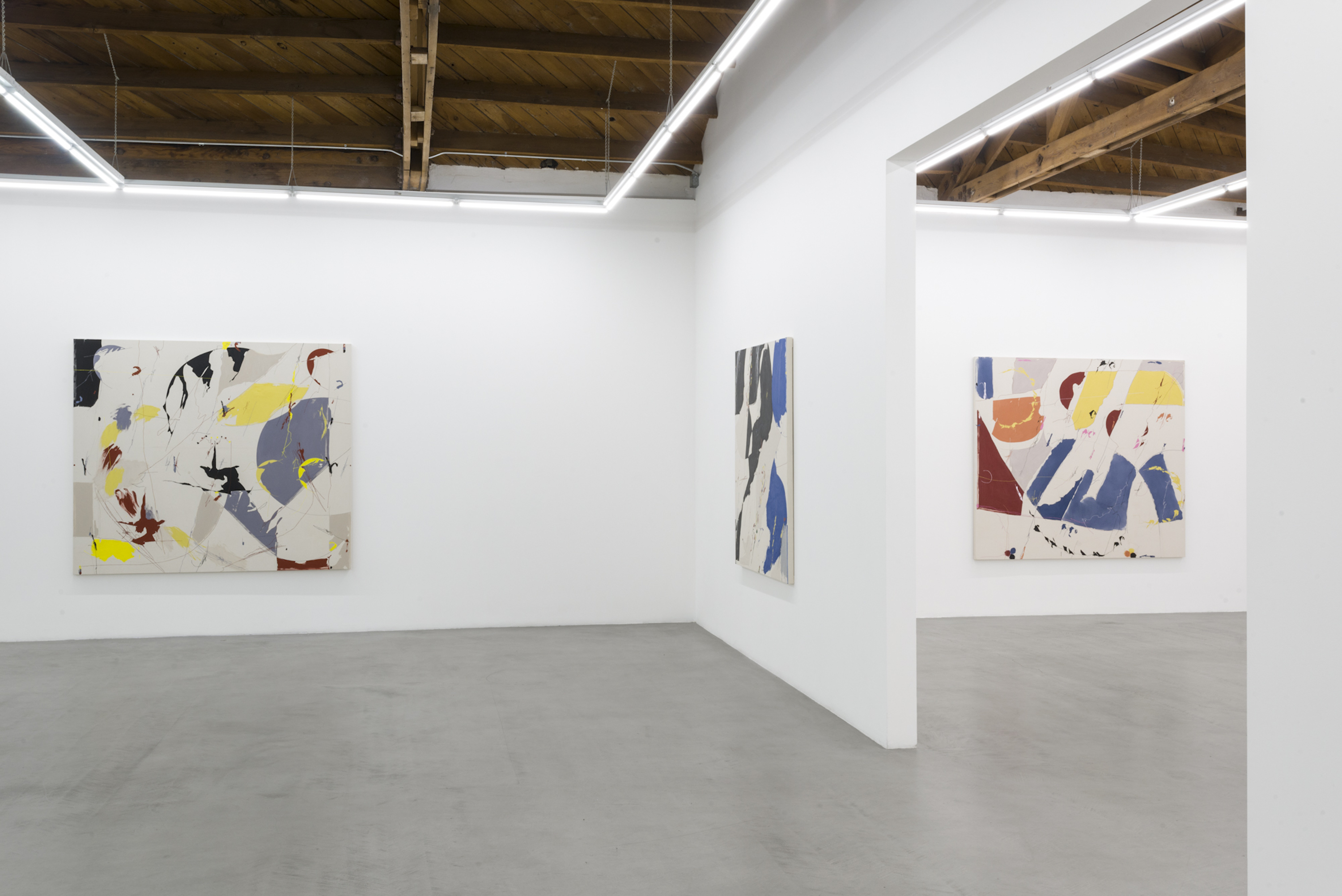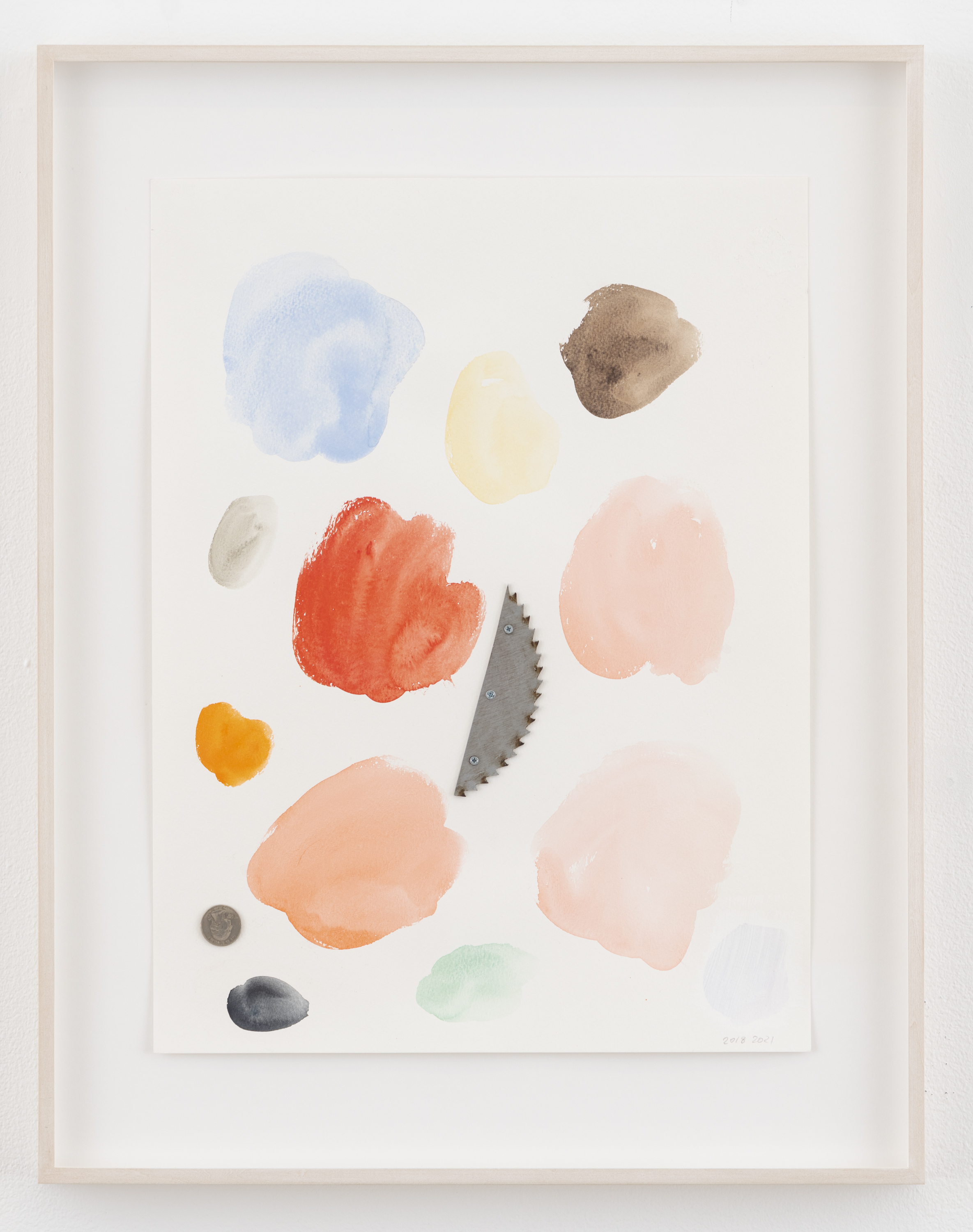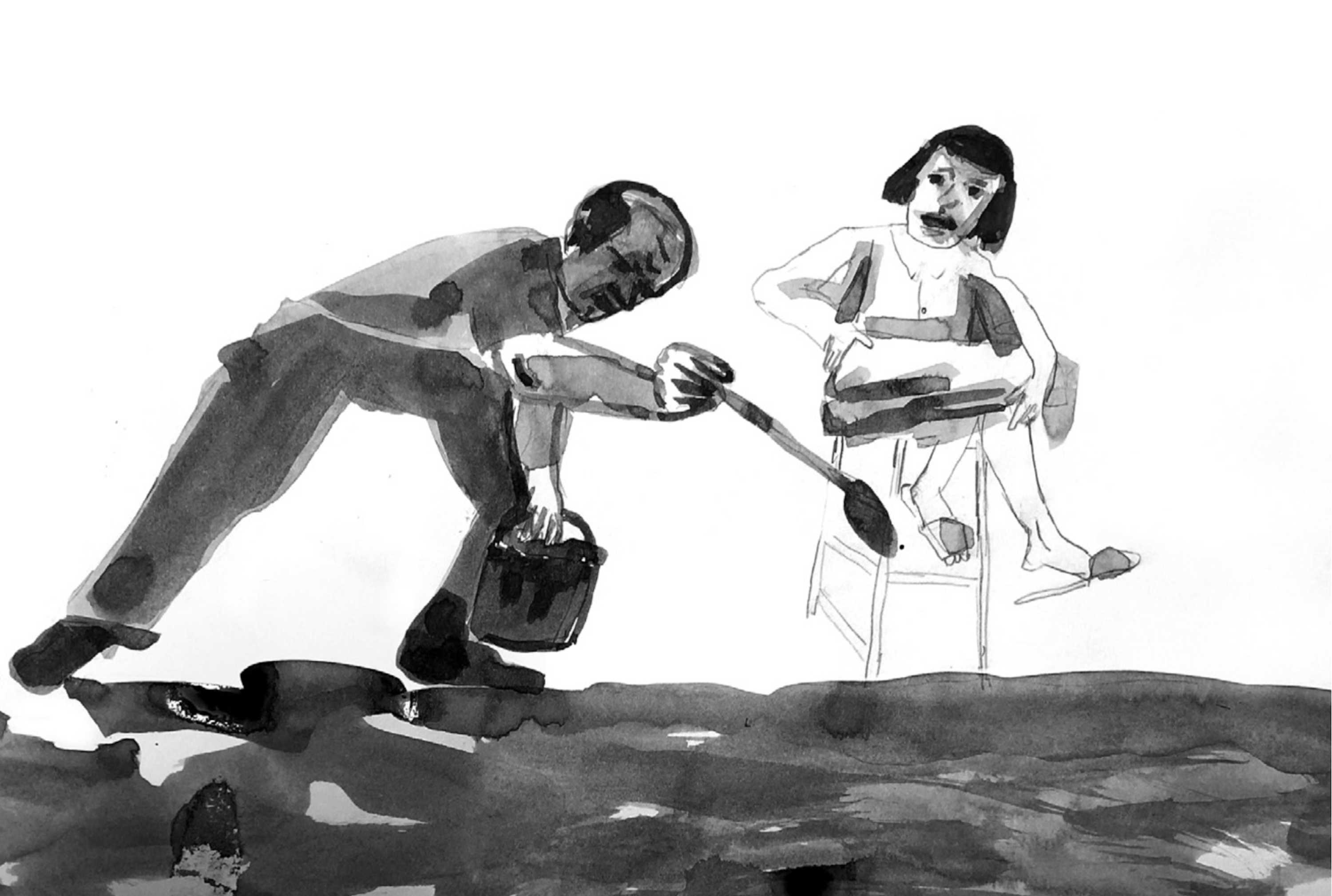March 1–April 20, 2024
Having survived first the Holocaust and then three years’ conscription in the Red Army, the Jewish-Polish painter Emanuel Proweller later said of his identity that it felt like “a jacket with a reversible lining.”1 The same analogy might be applied to Proweller’s paintings which, though unmistakably his own, routinely dress up in the various styles the artist encountered after moving to Paris at the end of the 1940s. Pilfering and distilling motifs of Fauvist landscape, Cubism, Hard-edge abstraction and proto-Pop appropriations of commercial graphic design, Proweller pursued striking, radioactive syncopations of color.
Taken together, the paintings in this survey map a progression from strict geometrical abstraction to a more confident and eclectic mode in which Proweller’s dynamic planes of color begin to serve as set pieces for more recognizable forms. Often, these are laconic bodies or quotidian objects, sights from Proweller’s home in Créteil, on the outskirts of Paris, or his countryside studio in Ardèche. But the artist’s move toward figuration was less a means of representing his world than an opportunity for his colors to encounter one another at increasingly complex and unexpected boundaries. In Au bois de Chaville [In the woods of Chaville] (1974), sky blue and viridian catch and tangle along the top of a gnarled hedgerow, while below, the eggplant of a man’s hand delicately curls into the magma-red flesh of his lover beneath the shade of a metallic tree—or is it a lamppost?
Two earlier paintings, La Cafetière [The coffeemaker] (1955) and Sortie d’usine [Leaving the factory] (1956), resemble cropped studies of a Picasso still life, drenched in Matisse’s high-key palette. Yet these works already display some of Proweller’s longstanding signatures: his deliberate and tightly bound forms, mapped out by still-visible pencil marks, and a tendency to offset an arrangement of more natural hues with a few sizzling contrapuntos, such as the electric-green handle of a kitchen implement floating mysteriously against an umber backdrop in Sortie d’usine, or the dazzling, yellow lozenge ascending amid a clutter of gentle blues and oranges in La Cafetière.
Central to Proweller’s art is an interest in what color can do to form. In one gorgeous early abstract, Le Manège [The carousel] (1949), several golden rays splay out from a lemon-yellow cross at the center of the off-white canvas, evoking shafts of afternoon light across a sundial. Between them, a series of tangerine shapes appear at different intervals along the painting’s clockwise composition, as if to represent a single form being slowly squeezed and distended by light and by time. Meanwhile in Midinette au journal [Shopgirl with newspaper] (1954), the show’s funniest work, a humanlike subject appears bug-eyed, enveloped in stultifying red, clutching her copy of Automobile Club, the actual magazine pasted to the canvas. Managing to stimulate without overwhelming, Proweller pushes his balancing act to the limit, more often succeeding in a kind of naïve harmony that feels on the brink of collapse. And even when it does collapse slightly into groovy, living-room kitsch (L’Amour, 1969), it’s hard to resist the sheer glee of Proweller’s audacious color scheming.
The paintings Proweller made in his final decade are among his strangest and most thrilling. Dialing back the intensity of his colors, he poses ambiguous human figures within flattened, oddly proportioned tableaux, as if glimpsed from afar through a telephoto lens. In Ramassage de branche [Branch collecting] (1981), painted in the year Proweller died, two distant figures, obscured by bushes and the trunk of a tree, wield fallen branches above their heads like children play-fighting with toy swords. But the innocence of the action and the painting’s title wither before the dark, impossibly giant tree trunk that devours half of the picture plane—a black void opening at the center of the idyllic scene.
The painting in “Un souvenir de soleil” most emblematic of the genre-bending that made Proweller difficult to classify could also, appropriately, be read as self-portrait. In Le voleur de poires [The pear thief] (1970), a few broad, geometric shapes divide the canvas into brown wall, green grass, yellow letterbox and the parallel lines of a crude wooden ladder. Meanwhile, finer details creep in from the corners: the delicate branch, leaves and fruit of pear tree, and three perfect weeds sprouting from a shard of gray pavement. A pair of yellow hands appear at the top of the wall, their fingers draped like wet stockings left out to dry. This “thief” might be Proweller, helping himself to a few ripe fruits before slipping, unnoticed, back over the garden wall.
Quoted in the exhibition catalog Proweller – Un souvenir de soleil (Paris: Galerie GP & N Vallois, Editions courtes et longues, 2023), 4.
